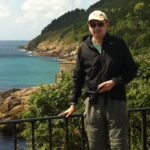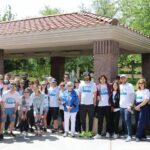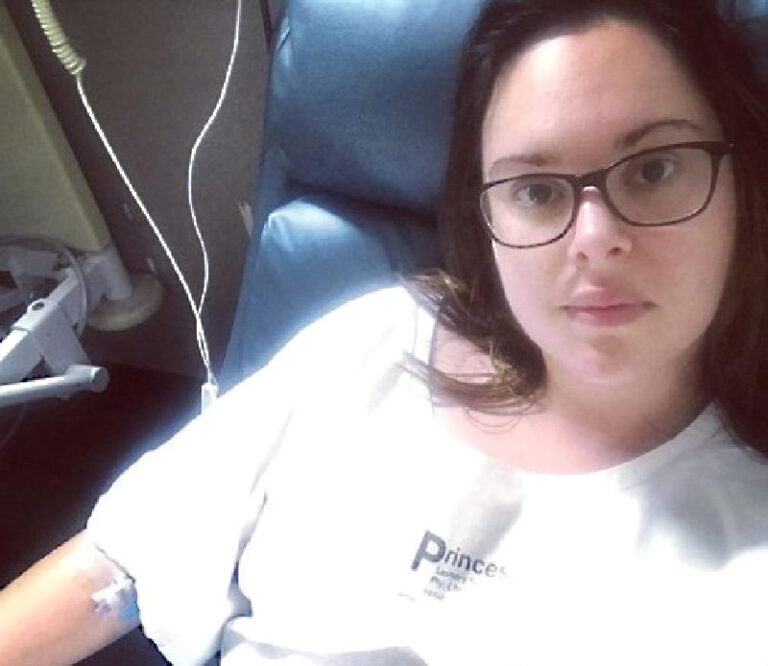What a year 2020 was for us all. While many were working from home, figuring out how best to balance a laptop and cup of coffee on the sofa, trying to home-school their children, caring for vulnerable family members, and getting to grips with mask protocol and social distancing, I was home as well, but fighting a different battle altogether.
In May 2019 I announced on Linked In what I thought would be a three month career break:
Knowing when to step back and take a break can be hard. This week I start a three month career break to devote my time to fighting a rare autoimmune disease life has thrown my way. I am lucky enough to have an amazingly supportive workplace in #Deloitte and an amazing support system of friends and family. I will kick this thing! Watch this space 😊 #careerbreak #health
I had recently returned from a holiday to Bali. After a week of relaxing by the swimming pool and doing the typical tourist activities, I returned to Melbourne with what I thought was a simple throat infection. I wasn’t worried though: I got some antibiotics, and got stuck into a new project at work. However, the infection lingered, and with it came incredible muscle pain that left me too weak to even roll myself over in bed, and had me struggling with walking, stairs, and getting up or down from a seated position. I still tried to go to work, and reassured my colleagues that it was just some muscle pain and it would pass.
It didn’t pass. It got worse and I ended up back at my GP’s office. I will forever be grateful for my family doctor who took one look at me, and knew straight away what was wrong despite it being a literal one in a million diagnosis. He sent me immediately to hospital with some very worrying test results, and I was admitted straight away. Over the coming month in hospital, tests confirmed that I had dermatomyositis.
It was utterly debilitating. I went from being a healthy, active young woman, to living in a crippled, exhausted, useless body. One day I was a hard working, newly promoted Senior Manager; the next I was a patient number; a bar-code on a wrist band. My meetings were replaced with endless specialist appointments. I was poked and prodded and cut into and bombarded with a barrage of X-rays, CT scans, PET scans, MRIs: every part of my body that could be imaged, or measured in some way, was captured and considered by a growing team of specialists who were both looking for answers and interested in seeing someone with my condition, some of them for the first time. I had no control over my life any more. I was at the mercy of my failing immune system and my doctors were very much in charge.
Hitting rock bottom: hopeless and alone
I won’t lie to you: I was terrified. It didn’t help that the week prior to my month-long stay in hospital, my younger sister had a psychotic break that left her wandering across Melbourne, manic and unraveling at the seams. She was diagnosed with paranoid schizophrenia and I had her committed to a youth-psychiatric facility for three months. My family has never forgiven me for having her committed, and we have not spoken since. I was forced to face my own ailing health without any emotional or moral support from my family. I was dead to them, and would need to find the courage to continue, on my own.
To add insult to injury, not long after my diagnosis, my partner left me, stating that it was no fun having a sick girlfriend. He couldn’t deal with it, so he checked out, and moved on.
In the short space of a few months, I had everything taken away from me: my family, some of my friends, my partner, my health, my job, even the way I looked (low-dose chemotherapy made my hair thin and fall out in places, and steroids dramatically changed my appearance, giving me moon-face, and making me gain a lot of weight). I had no energy. I had no idea what would happen next. I was at rock bottom with no clear path out. I was hopeless, and I was alone.
People keep telling me how resilient I am, but really, I’m just too stubborn. Too stubborn to take no for an answer. Too stubborn to lie down defeated. Too stubborn to not try and get back up again.
Fighting for my life
Autoimmune disease is like a large, angry dinosaur: it stomps around, noisily, destroying whatever it wants: in my case, my muscles, my skin, and my lungs. After that initial rampage, it can be a slow-beast to tame. It doesn’t respond to anything quickly. It takes time and patience to manage. My first meeting with my specialist, I asked her if I would be ready to return to work soon. She looked at me, incredulous, shook her head and gave a definitive, N-O.
I thought the disease itself was bad, but it was nothing in comparison to the treatment. I was given high-dose steroids to completely crush my immune system, plus low-dose chemotherapy to further wipe out any fight my ailing antibodies had in them. I was lucky enough to have access to a life-changing immune therapy, called IVIG. At $10,000 for a course of treatment, I was incredibly thankful that it was covered under Medicare here in Australia. Thanks to my colourful travel history, there was a risk that I had a dormant TB infection, which they decided to treat me for, just in case it flared up once my immune system died down. I was put on nine-months of antibiotics to kill any latent TB that might be in my system. Added to this were opiates to manage my pain, proton-pump inhibitors to protect my stomach lining, vitamin supplements to protect my bones, and anti-emetics to manage my nausea. Some days I was taking upwards of twenty pills: I rattled when I walked.
All of this left me sick to my stomach. I was exhausted and slept most of the day. I was too sick to really eat and enjoy food. I was too weak to leave the house. I was too tired to do anything productive. My life revolved around medication doses and trips to the hospital. I had my blood work done every fortnight. I got onto first name terms with my pharmacist, my phlebotomist, my GP, and the nurses at the local surgery. I lay in my bed listening to podcasts. I watched a lot of Netflix. Time passed.
Things got better, then worse, then a bit better again, then worse as we continually adjusted my medications, trying to find a combination that would work and that I could tolerate long-term. Rare diseases like to congregate in packs so, in addition to the dermatomyositis, I developed another rare illness: primary hypersomnia. This explained why, despite being pumped with high-dose steroids, I was still sleeping 16 hours a day. We added another specialist to my team, more medications, and kept on going, trying to figure things out, hoping for improvement.
This too shall pass
Months went by. I don’t know how I survived. I would like to give you some lovely life lesson I learned through all of this, but the truth is, I just kept breathing. That was all I could do, and even that was difficult some days. But I woke up every day, I took my medication, I rested, and I waited for tomorrow to be better. It wasn’t glamorous. It won’t make a very interesting day-time TV movie. But it was what worked. And it did work.
Slowly, I got better. We found a medication regime that worked for me, and I was able to start weaning off the steroids. I started physio and started to regain some strength. My hair grew back. Some of the weight I’d put on started to go away. I got my pain and nausea under control so I was able to move more, and eat actual food again.
I found new friends and reconnected with old ones. They did grocery shopping for me, and took me for walks with their dogs, and messaged me throughout the day to keep me company. I tapped into my local Good Karma network on Facebook and found a whole community of people who were happy to drop off loaves of bread and pints of milk mid-pandemic. My neighbours would take my bins in and out for me and drop off meals in tupperware boxes, ready to reheat when I was able. I started a board-gaming group to get me out of the house and found a great group of people to hang out with and play games with on my good days. And I met someone, just before the pandemic, who was happy to just lie on the sofa with me, who encouraged me to try and eat, to try and exercise, to try and live life that little bit more. He knew what he was getting into, and he has stuck by me ever since.
Are we there yet?
Every time I saw my specialist, I asked the same question: “when can I go back to work?” Through all of this, work had been my red-thread. My department kept my job on hold for me, and my career coach kept in touch with me the entire time I was away. My colleagues sent cards, and video messages, and let me know that I was missed. I hated being unable to work: I loved and continue to love what I do. I work with some amazing people, and we get to solve really interesting problems together. I was frustrated that I was missing out on projects, on opportunities.
January: “When can I go back to work?” – I don’t know
April: “Can I go back to work yet?” – no
July: “Now, can I go back to work?” – no
October. I didn’t even bother asking this time. I was so used to my specialist telling me to wait it out, to be patient. When she looked at me and said, “Let’s talk about you getting back to work”, I couldn’t quite believe my ears.
Was I ready? Would I be able to do a good job? I didn’t want to come back and be O.K. at what I do – I wanted to come back and be excellent. Would that be possible? Did I have the mental wherewith-all to even do the kinds of things I did prior to being sick?
It’s a leap of faith, coming back to work after being sick. Anyone who has come back from extended parental leave will, I think, understand how it feels. The you that you were before is gone, and a new, untested you takes their place. Who is this new person? What are they capable of doing? What are their limits? You just don’t know. Not yet.
I couldn’t sit around waiting for the day when I would magically transform back into the same person I was getting off the plane from Bali, before all of this began. That person no longer existed. I had spent enough time mourning her. I had to make do with this new me. It was time, as it were, to take her for a test-drive, see what she is capable of doing.
Life on L-plates
So, here I am, twenty months later, back at work. It is Day Two. I’ve been a consultant for ten years, but I feel like I am back on my L-plates. I did my first Zoom call today and couldn’t figure out how to get my webcam working. I’ve already reached out to IT for help. I have no idea yet how our some of our new systems work. I’ve got lots to catch-up on, and new people to meet. My mandatory eLearning list is particularly long. I’ve yet to see our new offices. Soon, I will have a new project to manage, and that’s when the real test will begin. Bring it on.
COVID has, paradoxically, made a lot of things easier for me. Everyone is now working from home, so my need to not be in the office is completely normal. Everyone is wearing face-masks, so I no longer stand out like a sore thumb when I leave the house. We have a whole new approach to flexible working with new systems enabling us to connect and collaborate. Until I get the vaccine, I will be staying at home, but I look forward to eventually being able to return to the office and to connect face to face with people again.
Limited edition
People keep telling me how resilient I am, but really, I’m just too stubborn. Too stubborn to take no for an answer. Too stubborn to lie down defeated. Too stubborn to not try and get back up again.
I like to joke that I am “limited edition” not just for the rarity of this illness, but because this disease makes us vulnerable, our immune systems faulty. The drugs I rely on to keep me alive come with black box warnings. I poison myself regularly just to halt the progression of this illness. My risk of cancer means I need to have an annual PET scan. Catching an infection might land me in hospital and something like COVID, or even the flu, could kill me. Sometimes it feels like it is not a case of if, but a case of when.
The reality is though, we are all limited edition. None of us knows how long we have left and, if anything, this pandemic has shown us just how precious and valuable and fragile and precarious life is.
Gather ye rosebuds
I don’t know when this disease will rear its ugly head again, and throw me another curve-ball. In the meantime, I’m just going to keep on going. That’s all any of us can do. It’s not brave. It doesn’t make me special. It’s just what needs to be done.
So, I leave you with a poem:
Gather ye Rosebuds while ye may
Old Time is still a-flying:
And this same flower that smiles to day,
To morrow will be dying.
The glorious Lamp of Heaven, the Sun,
The higher he's a getting;
The sooner will his Race be run,
And neerer he's to Setting.
That Age is best, which is the first,
When Youth and Blood are warmer,
But being spent, the worse, and worst
Times, still succeed the former.
Then be not coy, but use your time;
And while ye may, go marry:
For having lost but once your prime,
You may forever tarry
Robert Herrick, 1648
Thank you for reading. Stay safe. Be well.
[zombify_post]







Hi Lizzy, your journey is very inspiring. Balancing life, myositis and work is a challenging but constant learning experience. Wishing you all the very best. Take care.
hi Lizzy – it was hard reading that; i actually skipped over the first 5 mnths..sorta..lol. you and i both started this journey in May of 2019 (offically diagnosed May 22)…so (reaches for your hand and holds it) walking this with you.